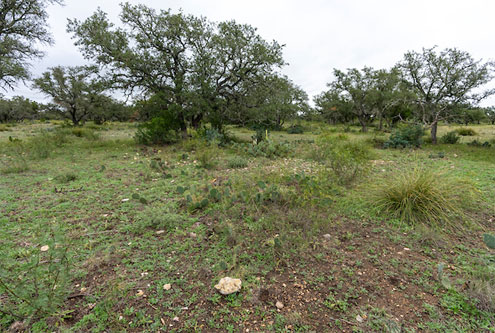Conditions in rangelands and unimproved pasture vary dramatically across Texas based on precipitation as the warm-season forage growing period begins, said experts with the Texas A&M AgriLife Extension Service.
At more than 92 million acres, rangelands represent Texas’ largest native cover type and comprise diverse ecosystems of native grasses and forbs that livestock production and wildlife populations rely on.
While Central and West Texas have received some relief from recent rainfall, the moisture hasn’t been enough to replenish the region’s rangelands after multiple years of drought and above-average temperatures, said Morgan Treadwell, Ph.D. AgriLife Extension range specialist and professor in the Texas A&M Department of Rangelands, Wildlife and Fisheries Management, San Angelo.
“We’ve definitely received some relief, but it hasn’t been enough to fully bail us out,” Treadwell said. “These compounding back-to-back drought events have really dominated the western landscape and parts of the Edwards Plateau and Hill Country as significant stressors.”

According to the U.S. Drought Monitor, roughly 52% of the state is in some form of drought, compared to 27% this time last year. Extreme and exceptional drought classifications account for 26% of the landscape compared to only 2% in 2024.
Precipitation outlook in the West
requires strategic actions from producers
With the National Weather Service predicting a continuation of this warmer, dry pattern in the western portion of Texas over the next three months, Treadwell said some producers are making difficult decisions regarding their livestock operations.
“Some folks west of San Angelo are reducing or liquidating their cattle herd but keeping small ruminants like goats and sheep,” she said. “I think that is a difficult decision to make but a very strategic move considering how foragers can rely on vegetation other than perennial grasses.”
Treadwell said goats can also help suppress woody encroachment of species like mesquite and redberry juniper that can rapidly establish during drought years.
Planning ahead is critical, even in good conditions
Areas east of U.S. Interstate 35 as well as portions of the Panhandle and North Texas are doing very well in terms of precipitation and early green up of warm-season perennial grasses, said Jeff Goodwin, Ph.D., director of the Texas A&M Center for Grazinglands and Ranch Management and Texas A&M AgriLife Research assistant professor in the Department of Rangeland, Wildlife and Fisheries Management
“In trying to find some optimism, the precipitation South Texas received in March was quite timely, and those rangelands will greatly benefit from that moisture,” said Goodwin, who also holds the Thomas M. O’Connor Endowed Directorship in Rangeland and Wildlife Management at Texas A&M University.
He added that dramatic weather extremes underscore the importance of livestock producers establishing contingency plans and mitigation strategies ahead of time.
“The most common challenge we face is drought,” Goodwin said. “From a drought perspective, producers need a contingency plan with established indicators that trigger certain actions.”
For example, if a producer sees that their rangeland or pasture has produced half the amount of grass typical for that period in a growing season, that assessment should trigger some sort of mitigation action such as employing stockpiled pastures, weaning calves early or reducing the stocking rate, he said.
“You have to do your best to maintain rangeland vegetation cover and soil health,” Goodwin said. “The ranches that maintain good vegetation cover are typically the last ones to feel the effects of a drought and the first ones to bounce back.”
In addition to benefiting a herd, he said this planning also serves wildlife that rely on abundant and varied rangeland vegetation for food, nesting, thermal and safety cover, and more.
Panhandle recovery still ongoing
One year after the Panhandle wildfires, Goodwin and Treadwell said the region’s rangelands are slowly recuperating but still need significant rainfall for full recovery.
“The producers who I have met with understand now is the time for grazing deferment and rest to capitalize on the future benefits and resources afforded from that fire,” Treadwell said. “They are amazing rangeland stewards and want to get it right — they’re very optimistic for future rainfall to come.”

